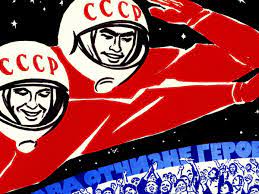The Russian Propaganda Machine: How has it Changed?
Since the collapse of the Soviet Union, the Russian Federation has transformed its Propaganda from inciting a war of facts against the United States during the Cold War, to a War of endless and overwhelming information to confuse both their people and the international community.
There has been much transparency on the kind of propaganda the Russian Federation has put out during its malicious and flagrant violation of human life during its invasion; an insult to Ukrainian solidarity and independence. However, the problem in contemporary propaganda is not the identification of propaganda itself, but how to sift through the endless sources on the internet and figuring out what is a waste of time and what is consequential. Technology and the mainstream media have helped the Russian government confuse its audience by bombarding them with disorganized chaos in terms of propaganda that often seems indecipherable.
During the Cold War, the Soviets ran what is called influence and disinformation campaigns; a much less abstract and direct form of propaganda that released less information that focused on facts in contrast to their more contemporary methods which release mass information and focus on confusing the audience.
The term “Active Measures’ came into use in the USSR in the 1950s to describe overt and covert techniques for influencing events and behavior in foreign countries. Disinformation – the intentional dissemination of false information – is just one of many elements that made up “Active Measures” operations. In the first decades of the Cold War, the CIA tracked Soviet disinformation, but the White House chose not to confront it directly. The Reagan administration changed tactics and established the Active Measures Working Group, an interagency group containing members of the USIA, CIA, FBI and State Department. The Group produced major reports to Congress and briefed the press. This was the first American attempt to respond comprehensively to disinformation; to define it, to create institutions to tackle it, and to draw attention to it at the highest level. The job was to discredit Soviet Propaganda and confront it directly.
This was much simpler back then than it is now because consumer culture in the media is extremely detrimental to tracking propaganda efforts. There is also simple much more of it.
Radio Free Europe and Radio Liberty were Cold War attempts to engage Soviet Bloc populations with issues and information that often contradicted Soviet bloc propaganda. To get their message across, the US-funded stations used refugees. Often political dissidents and well-known intellectuals who had escaped their countries, the RFE/RL refugee radio personalities not only spoke the native language of the target audience, they intuitively understood their politics as well. However, today, most media outlets focus on fact checking erroneous content instead of focusing on how people consume media in the contemporary world.
Russia has changed its propaganda from directly addressing the audience, to integrating blatant and obvious propaganda in mass amounts to confuse the consumer.
An example of this new method is the notorious “Z” symbol seen on Russian military equipment and displayed on respective soldiers’ uniforms.

The Z is an abbreviation for the translation “ For Country.” This symbol, however, had no real definitive meaning until the Russian Defense Ministry injected it with meaning: “They injected meaning in the symbols far beyond what they were most likely designated for,” says Kiril Avramov, assistant professor at the University of Texas at Austin’s Center for Russian, East European and Eurasian Studies. “It falls really well within the tradition of the best techniques of Soviet propaganda of hijacking and adopting symbols.” This symbol was also used in the past to represent nationalism – the Russian Government twisted this meaning for their own benefit. Now, looking toward past victories is a way for Russia to reframe the war and gain support from citizens. “What they’re trying to do is equate the deeds of the Russian army today with the deeds of the Red Army during World War II,” says Avramov. “Russia is going back on the world stage, belligerent and embattled and by itself. This is an aha moment to rekindle energy for Russians to rally around the flag.”
It seems as if the Russian Federation is using the mainstream media to present obvious propaganda with the sinister intent of confusing and twisting facts as opposed to their old tactics that focused on quality over quantity.
